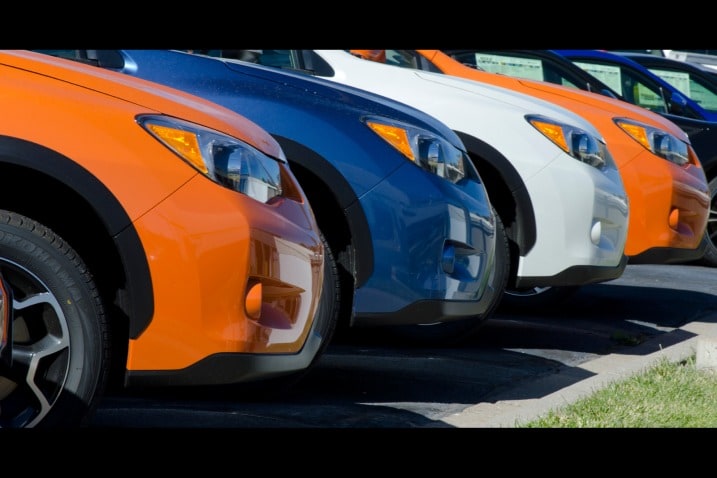New Cars: Dealer Holdbacks and Dealer Cash
Car pricing is a complicated process. To simplify things, consumers learn to look at the invoice price of a car and assume that's what the dealer paid for it. They may then wonder how a dealer is making a profit if it's selling the car for the invoice price. This instance is where two other sources of manufacturer money come into play.
Dealer holdback: This money is from when the manufacturer pays the dealer after a car is sold. It's typically 1% or 2% of either the invoice or the sticker price of the car. On a $20,000 car, a holdback represents $200 to $400. The holdback allows dealers to sell a car at invoice price, or even below invoice, but still receive money to cover the costs of doing business (advertising, sales commissions, etc.). Most manufacturers offer holdbacks to their brands' dealers, but not all. This information is helpful to know, but don't try to build it into your negotiations. Dealers consider this money off-limits for the purposes of price negotiation.
Dealer cash: To help move metal, a manufacturer will sometimes offer a bonus incentive to the dealer to move a vehicle off lots. That's known as dealer cash. Dealer cash can also come into play at the end of a model year when both the dealership and the manufacturer want to clear out even popular cars to make way for incoming new vehicles. Dealer cash is rarely advertised.
The Role of Commissions
Traditionally, a car salesperson works on commission, beyond a minimum-wage base salary. Generally, a salesperson would receive a percentage of a car deal's "front-end gross profit" as commission. Front-end gross profit is usually described as the difference between dealer invoice and the selling price. That percentage tends to be somewhere around 20%. If a vehicle was sold with a $1,000 front-end profit, the salesperson would earn somewhere around $200.
Today, dealerships vary in how they structure compensation for the sales staff. Some still hold to traditional commission-based plans for car salespeople. But in a growing number of dealerships, the push is to sell as many vehicles as possible even if it means little or no profit per car. Simply put, the more car deals the car salesperson makes, the more money that salesperson takes in. Car salespeople typically try to hit sales goals to earn a more substantial paycheck by way of bonuses from the dealership or the carmaker.
Bonus programs play a substantial role in the overall picture of how much money a salesperson makes. Bonuses may be based on the number of cars sold or on overall customer satisfaction survey scores. Bonuses based on sales volume, rather than profit per car, have long been the model for dealership internet departments. That's a good reason for car shoppers to work with them.
Used Cars: Trade-Ins and Purchases
Although used cars account for the smallest percent of a dealership's gross profits, the trade-ins themselves can be a "huge profit center for the dealer," says Oren Weintraub, a former general sales manager at a top Ford dealership and now president of the concierge car-buying service Authority Auto in Los Angeles. And dealers really need those used cars.
For a dealer, used cars are more profitable than new cars. And because dealerships tend to recondition vehicles in-house, the refurbishing needs also help bolster parts and service sales.
On the buying side, used cars can be tricky for shoppers because local markets can have quirks that are difficult for the car shopper to spot. Only by researching the current market and comparing prices can you know the right price for a used car.
Finance and Insurance: More Important Than Ever
F&I is an important source of dealership income. According to NADA, roughly 90% of new- and 73% of used-car purchasers implemented some sort of financing, purchased an after-sale product, or did a combination of both. The F&I department products are often sources of dealership income, which has become increasingly important to the dealership's bottom line as profit margins on new cars shrink.
The dealership's F&I manager has three primary functions: Present the dealership's pitch for financing. It's worth listening because sometimes the interest rates are lower. But you also should arrange independent financing first. Then you'll be able to know for sure how good the deal is. The department's second function is to offer aftermarket products — think extended warranties and theft protection packages — for sale. Ultimately, the third is to get a shopper's loan approved.
The Service Department
In economic hard times, service bays have kept many dealerships afloat. Dealers know that there's a good chance that a car buyer will bring the vehicle in for regular service, and even if the dealership only ekes out a thin margin on a new-car sale, there's the possibility of continued cash flow from a service relationship.
Commissions play a part in the service operation as well. Service advisers typically receive a commission on all the parts and services they sell. Again, the amount of sales pressure you'll experience varies widely. For some tips on how to handle scheduled maintenance visits and auto repairs, please read "Maintenance Basics" and "Stop Changing Your Oil."
Reputation, Reputation, Reputation
Now that you know more about where a dealership makes its money, you can move on to picking one that has a good track record in how it deals with customers, both as buyers and as clients of the service department. Visit Edmunds dealer ratings and reviews, where you can read about real consumer experiences.



 by
by 
